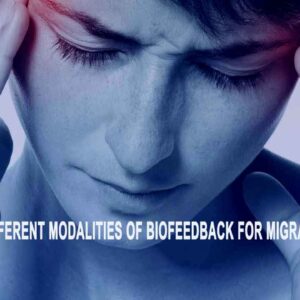Unlocking the secret of success is a pursuit that captivates individuals across all walks of life. In this quest for excellence, biofeedback modalities emerge as powerful tools, offering insights into the intricate interplay between mind and body. By harnessing the principles of biofeedback, individuals gain the ability to understand and regulate their physiological responses, cultivate resilience, and optimize performance in various domains.
Table of Contents
ToggleUnderstanding Success. What is it? What psychophysiological parameters will contribute to being successful?
Success is a multifaceted concept that transcends mere accomplishment; it embodies realizing one’s goals, aspirations, and the fulfillment of personal potential. Success is the attainment and satisfaction of an individual’s physical, mental, emotional, social, occupational, or personal goal or desire. In this context we will delve into the essence of success, exploring what it truly means and identifying psychophysiological parameters that contribute to achieving it.
Defining Success
Success, in its truest sense, goes beyond material achievements and societal recognition. It encompasses a holistic and individualized perspective, acknowledging that the definition of success varies from person to person. For some, it may involve professional accomplishments, while for others, it could revolve around personal growth, relationships, or contributions to society. Understanding success requires a nuanced appreciation of personal values, passions, and the alignment of one’s actions with their authentic self.
What Psychophysiological Parameters Contribute to Success?
Success is not solely a mental or physical endeavor; rather, it is a dynamic interplay between the mind and body. Psychophysiological parameters play a crucial role in shaping an individual’s journey toward success. These parameters encompass a range of factors, including cognitive functions, emotional intelligence, and physiological responses. Exploring the connection between the psychological and physiological aspects of success unveils a deeper understanding of how our minds and bodies influence our ability to achieve our goals.
Cognitive Functions
The cognitive aspects of success involve mental processes such as perception, attention, memory, and problem-solving. A sharp and focused mind is better equipped to navigate challenges, make informed decisions, and persist in the face of adversity. We will delve into how cognitive functions contribute to success and how biofeedback modalities can enhance cognitive abilities.
Emotional Intelligence
Success often hinges on the ability to navigate complex social and emotional landscapes. Emotional intelligence, encompassing self-awareness, empathy, and effective interpersonal communication, is a key psychophysiological factor influencing personal and professional success. Individuals with high emotional intelligence are better equipped to manage stress, build meaningful relationships, and inspire others, all of which are vital components of success. In this section, we will explore the role of emotional intelligence in achieving success and how biofeedback modalities can facilitate its development.
Physiological Responses
The body’s physiological responses, such as heart rate variability (HRV), electroencephalography (EEG) patterns, and galvanic skin response (GSR), offer valuable insights into our inner workings. These physiological indicators not only reflect our current state of arousal and stress but also influence our cognitive and emotional functioning. Understanding and regulating these physiological responses can have a profound impact on our ability to perform optimally and achieve success in various domains of life.
How Biofeedback Modalities Unveil the Secret of Success
Biofeedback modalities serve as powerful tools for uncovering the secret of success by directly influencing and optimizing psychophysiological parameters. These innovative technologies provide real-time feedback on various physiological processes, enabling individuals to gain awareness and control over their mind-body interactions. By harnessing biofeedback modalities, individuals can enhance cognitive functions, cultivate emotional intelligence, and regulate physiological responses, ultimately unlocking the key to success.
Enhancing Cognitive Functions
Biofeedback modalities, such as neurofeedback, offer a unique opportunity to optimize cognitive functions by directly targeting brain activity. Through real-time monitoring of EEG patterns, individuals can learn to modulate their brainwaves to achieve states of heightened focus, creativity, and cognitive flexibility. By training the brain to operate more efficiently, biofeedback facilitates sharper mental acuity and enhanced problem-solving abilities, essential elements of success in various endeavors.
Cultivating Emotional Intelligence
Emotional intelligence, a cornerstone of success, can be cultivated and strengthened through biofeedback training. Techniques such as heart rate variability (HRV) biofeedback enable individuals to regulate their physiological responses to stress and emotions, fostering greater emotional resilience and self-awareness. By learning to maintain a balanced autonomic nervous system response, individuals can navigate challenging situations with composure, empathy, and clarity, fostering deeper connections and success in interpersonal relationships and leadership roles.
Regulating Physiological Responses
Biofeedback modalities provide a direct means of regulating physiological responses, such as heart rate, respiration, and skin conductance. Through techniques such as respiratory biofeedback and GSR biofeedback, individuals can learn to induce states of relaxation, reduce stress, and enhance overall well-being. By achieving physiological coherence and balance, individuals can optimize their physical and mental functioning, paving the way for success in both personal and professional spheres.
By enhancing cognitive functions, cultivating emotional intelligence, and regulating physiological responses, biofeedback empowers individuals to unlock their full potential and achieve their goals with greater efficacy and fulfillment.
Illuminating Success with Electroencephalography (EEG) Biofeedback
Electroencephalography (EEG) biofeedback, also known as neurofeedback, unlocks the secret of success by harnessing the power of brainwave modulation. EEG biofeedback enables individuals to cultivate focused attention, creativity, and emotional balance by providing real-time feedback on brainwave activity. In academia, creative expression, and professional development, EEG biofeedback empowers individuals to optimize their cognitive functioning, unleash their creative potential, and achieve breakthrough success.
Enhancing Cognitive Functions
EEG biofeedback targets specific brainwave frequencies associated with cognitive functions such as attention, memory, and problem-solving. By training individuals to increase or decrease activity in these frequency bands, EEG biofeedback facilitates improved cognitive performance and mental acuity. Whether in academic settings, where students strive for academic excellence, or in corporate environments, where professionals seek to enhance productivity and innovation, EEG biofeedback offers a pathway to sharpened cognitive abilities and sustained success.
Cultivating Emotional Intelligence
Emotional intelligence, a critical component of success, is intricately linked to patterns of brainwave activity. EEG biofeedback enables individuals to modulate their brainwave patterns associated with emotional processing, fostering greater emotional resilience and self-regulation. Individuals can navigate interpersonal relationships with grace and authenticity by cultivating a balanced emotional state and enhancing empathic understanding, unlocking the secret of success in leadership, teamwork, and personal fulfillment.
Facilitating Peak Performance
In high-pressure environments such as competitive sports, performing arts, and executive leadership, achieving peak performance is paramount. EEG biofeedback offers athletes, artists, and professionals a means to enter flow states characterized by effortless focus, creativity, and peak performance. By training individuals to regulate their brainwave patterns associated with flow states, EEG biofeedback facilitates optimal performance and unlocks the full potential of individuals striving for success in their respective fields.
Promoting Neuroplasticity and Personal Growth
One of the most remarkable aspects of EEG biofeedback is its ability to promote neuroplasticity – the brain’s capacity to reorganize and adapt in response to experience. By engaging in targeted neurofeedback protocols, individuals can strengthen neural connections associated with desired cognitive and emotional states, facilitating personal growth and self-actualization. Whether overcoming limiting beliefs, cultivating resilience in the face of adversity, or fostering a growth mindset, EEG biofeedback empowers individuals to transcend barriers and unlock new levels of success in their lives.
Unlocking Success: Brainwave Optimization Strategies
Neurofeedback protocols can vary depending on individual goals and areas of focus related to success. However, some commonly used neurofeedback protocols that may contribute to success include:
1. SMR (Sensorimotor Rhythm) Training: SMR training aims to enhance sensorimotor rhythm activity in the brain, typically in the 12-15 Hz frequency range. This protocol is often used to improve focus, attention, and cognitive functioning, which are essential for success in academic, professional, and personal endeavors.
2. Alpha-Theta Training: Alpha-theta training involves enhancing alpha (8-12 Hz) and theta (4-8 Hz) brainwave activity, promoting a state of deep relaxation and creativity. This protocol can be beneficial for reducing stress, increasing emotional resilience, and facilitating insight and problem-solving abilities, all of which are conducive to success in various domains.
3. Beta Training: Beta training targets beta brainwave activity (15-30 Hz), which is associated with alertness, concentration, and cognitive performance. By increasing beta activity, individuals may experience heightened mental acuity, improved focus, and enhanced productivity, contributing to success in academic, professional, and creative pursuits.
4. Peak Alpha Frequency (PAF) Training: PAF training focuses on increasing the frequency of the individual’s peak alpha frequency, which is unique to each person and correlates with cognitive functioning and overall brain health. By optimizing PAF, individuals may experience improved memory, attention, and cognitive flexibility, supporting success in cognitive tasks and problem-solving.
5. Connectivity Training: Connectivity training aims to improve functional connectivity between different brain regions, enhancing communication and coordination within the brain’s neural networks. This protocol can help optimize information processing, promote efficient brain functioning, and facilitate the integration of cognitive, emotional, and physiological processes, all of which are essential for success in various domains.
It’s important to note that the selection of neurofeedback protocols should be based on individual assessment, goals, and preferences, and ideally conducted under the guidance of a qualified neurofeedback practitioner. Additionally, success in neurofeedback training often requires consistency, patience, and commitment to the process over time.
By enhancing cognitive functions, cultivating emotional intelligence, facilitating peak performance, and promoting neuroplasticity, EEG biofeedback empowers individuals to achieve their goals with greater efficacy and fulfillment. Whether striving for academic excellence, professional success, or personal growth, EEG biofeedback offers a pathway to unlock the full potential of the human mind and unleash success in every aspect of life.
Unlocking the Secret of Success with Heart Rate Variability (HRV) Training
Heart Rate Variability (HRV) training stands as a beacon of hope in biofeedback modalities, offering a profound understanding of the intricate workings of the body’s autonomic nervous system and its pivotal role in the pursuit of success. At its core, HRV reflects the subtle variations in the time intervals between successive heartbeats, serving as an invaluable indicator of physiological resilience and adaptability. With HRV training, individuals embark on a transformative journey, delving deep into the nuances of their physiology to unlock untapped potential and achieve unparalleled success.
In the bustling arenas of athletics, where victory often hinges on split-second decisions and unwavering determination, HRV training emerges as a game-changer. By honing their HRV, athletes cultivate the resilience needed to push past physical limitations, maintain optimal performance under duress, and emerge victorious on the field of play. Whether sprinting toward the finish line or striving for new heights in endurance sports, HRV training equips athletes with the tools to harness their innate physiological capabilities and achieve peak performance when it matters most.
Similarly, in the fast-paced landscape of corporate leadership, where success is measured by strategic acumen, resilience in the face of adversity, and the ability to inspire and motivate teams, HRV training offers a beacon of hope. By optimizing their HRV, leaders cultivate emotional intelligence, enhance stress management skills, and foster a calm and composed demeanor amidst chaos. Armed with the insights gleaned from HRV training, leaders navigate turbulent waters with grace and poise, steering their organizations toward unprecedented success and growth.
Moreover, HRV training transcends the boundaries of specific domains, offering universal benefits that extend to all facets of life. Whether pursuing academic excellence, striving for personal fulfillment, or embarking on a journey of self-discovery, individuals find solace and empowerment in the practice of HRV training. By fostering resilience, emotional regulation, and cognitive performance, HRV training unlocks the secret of success, paving the way for a brighter and more fulfilling future.
In essence, HRV training represents a beacon of hope in the pursuit of success, offering individuals the keys to unlock their full potential and achieve greatness in every aspect of their lives.
Breathing Success: Respiratory Biofeedback Techniques
Respiratory biofeedback techniques offer a pathway to success through breathing patterns and autonomic nervous system balance regulation. Respiratory biofeedback facilitates relaxation, stress reduction, and enhanced mental clarity by guiding individuals to achieve coherent breathing patterns (video). In domains such as sports performance, mindfulness practice, and stress management, respiratory biofeedback empowers individuals to harness the power of breath to optimize performance, foster resilience, and achieve peak success.
Harnessing Success with Galvanic Skin Response (GSR) Biofeedback
Galvanic Skin Response (GSR) biofeedback offers unique insights into the body’s sympathetic nervous system activity and its influence on emotional arousal and stress. By monitoring changes in skin conductance, GSR biofeedback provides individuals with valuable feedback on their stress levels and emotional reactivity. In fields such as public speaking, interpersonal communication, and performance arts, GSR biofeedback equips individuals with the tools to manage stage fright, enhance charisma, and convey confidence, unlocking the secret of success in high-pressure situations.
Empowering Success with Muscle Biofeedback
Muscle (EMG) biofeedback provides individuals with insights into muscular tension and relaxation, offering a gateway to success in various domains. By monitoring electromyographic (EMG) signals, muscle biofeedback enables individuals to develop awareness of muscular tension patterns and learn to release tension effectively. In fields such as physical rehabilitation, sports training, and stress management, muscle biofeedback empowers individuals to optimize movement efficiency, prevent injuries, and achieve peak performance, unlocking the secret of success through bodily awareness and control.
From HRV training to EEG biofeedback, GSR biofeedback, respiratory biofeedback, and muscle biofeedback, each modality offers unique insights and techniques for optimizing performance, fostering resilience, and achieving peak success. By harnessing the power of biofeedback, individuals can unlock their full potential and embark on a journey toward greater fulfillment and achievement in every aspect of their lives.
Biofeedback Modalities Applications in Various Domains
Whether in sports performance enhancement, stress reduction and mental health, academic and professional success, or creative and artistic expression, biofeedback empowers individuals to unlock their full potential and achieve their goals with precision and excellence. By harnessing the power of biofeedback, individuals can transcend limitations, cultivate resilience, and embark on a journey toward greater fulfillment and success in every aspect of their lives.
Unveiling the Secret of Success in Sports Performance Enhancement
Sports performance enhancement represents a domain where the pursuit of success is paramount. Biofeedback modalities offer athletes a unique opportunity to unlock their full potential and achieve peak performance. By harnessing techniques such as HRV training, EEG biofeedback, and muscle biofeedback, athletes can optimize their physical and mental abilities, cultivate resilience, and elevate their performance to new heights. Whether striving for victory on the field, track, or court, biofeedback empowers athletes to unlock the secret of success and achieve their athletic goals with precision and excellence.
Unlocking Success Through Stress Reduction and Mental Health
In today’s fast-paced world, managing stress and maintaining mental well-being are essential components of success. Biofeedback modalities provide individuals with effective tools for stress reduction and mental health enhancement. Through techniques such as respiratory biofeedback and GSR biofeedback, individuals can learn to regulate their physiological responses to stress, cultivate emotional resilience, and achieve greater clarity of mind. By prioritizing mental health and well-being, individuals can unlock the secret of success in both their personal and professional lives, fostering greater fulfillment and productivity.
Revealing the Secret of Academic and Professional Success
Academic and professional success hinge upon cognitive abilities, emotional intelligence, and effective stress management. Biofeedback modalities offer students and professionals valuable tools for optimizing their performance and achieving their goals. Through techniques such as EEG biofeedback and HRV training, individuals can enhance focus, memory retention, and cognitive flexibility, leading to improved academic and professional outcomes. By cultivating emotional resilience and stress resilience, individuals can navigate challenges with confidence and achieve success in their chosen fields.
Unleashing Creativity and Artistic Expression
Creative and artistic expression represent domains where unlocking the secret of success is synonymous with tapping into one’s inner creativity and authenticity. Biofeedback modalities provide artists, musicians, and performers with tools for enhancing creativity, overcoming performance anxiety, and achieving flow states. Through techniques such as EEG biofeedback and respiratory biofeedback, individuals can enter states of heightened creativity, presence, and inspiration, unleashing their artistic potential and achieving success in their creative endeavors.
From Conflict to Connection: Biofeedback’s Impact on Family Dynamics
Each biofeedback modality offers unique benefits for promoting successful relationships within the family, from enhancing emotional regulation and stress management to improving communication and fostering a sense of unity and understanding.
1. HRV training can play a crucial role in promoting harmony and resilience within family relationships. By optimizing HRV, individuals develop greater emotional regulation and stress management skills, allowing them to navigate conflicts and challenges with composure and empathy. Family members who engage in HRV training may experience improved communication, deeper connections, and a greater sense of unity and understanding within the family unit.
2. Electroencephalography (EEG) Biofeedback: EEG biofeedback can be beneficial for enhancing cognitive functioning and emotional intelligence within the family. By training individuals to regulate their brainwave activity, EEG biofeedback can improve focus, attention, and decision-making abilities, fostering more meaningful interactions and mutual support among family members. Additionally, EEG biofeedback may help family members manage symptoms of anxiety, depression, or ADHD, contributing to a healthier and more harmonious family dynamic.
3. In the family context, GSR biofeedback can promote emotional awareness and empathy among family members by helping them recognize and regulate their physiological responses to stressors. By practicing GSR biofeedback together, family members can learn to communicate more effectively, manage conflict constructively, and cultivate a supportive and nurturing environment at home.
4. Respiratory biofeedback focuses on optimizing breathing patterns, which can have a profound impact on emotional regulation and stress reduction within the family. By teaching individuals to control their breathing and activate the body’s relaxation response, respiratory biofeedback promotes calmness, reduces tension, and fosters a sense of peace and tranquility in the family environment. Family members who practice respiratory biofeedback together may experience improved communication, enhanced intimacy, and a greater sense of connection and harmony.
5. Muscle (EMG) biofeedback can be beneficial for managing physical and emotional stress within the family. By learning to relax tense muscles and release physical tension, family members can alleviate symptoms of anxiety, promote physical comfort, and enhance overall well-being. Muscle biofeedback techniques may also be used to address issues such as chronic pain or tension headaches, allowing family members to support each other in managing health challenges and improving quality of life.
By incorporating biofeedback practices into family life, individuals can cultivate resilience, deepen connections, and create a supportive and nurturing environment where each member can thrive and flourish.
Biofeedback modalities offer a powerful pathway to unlocking the secret of success by empowering individuals to harness the innate potential of their minds and bodies. By integrating biofeedback into personal and professional development practices, individuals can cultivate self-awareness, resilience, and optimal performance, ultimately leading to greater fulfillment and achievement in every aspect of their lives.
Navigating the Path to Success: A Guide to Choosing the Right Biofeedback Modality
When choosing the most appropriate biofeedback modality to enhance success, it’s essential to consider individual goals, preferences, and areas of focus.
Here are some recommendations to guide your selection process:
1. Identify Your Goals: Clarify your specific objectives for using biofeedback. Are you aiming to improve cognitive performance, manage stress, enhance athletic performance, or cultivate emotional intelligence? Understanding your goals will help you choose the most relevant biofeedback modality.
2. Assess Your Needs: Evaluate your current strengths and areas for improvement. Consider factors such as cognitive functioning, emotional resilience, physiological stress responses, and physical performance. Identifying your needs will guide you in selecting the biofeedback modality that addresses these areas effectively.
3. Consult with Professionals: Seek guidance from qualified professionals, such as biofeedback therapists, psychologists, or healthcare practitioners. They can assess your needs, recommend specific biofeedback modalities, and provide personalized guidance and support throughout the training process.
4. Consider Modalities’ Suitability: Assess the suitability of different biofeedback modalities based on your preferences, lifestyle, and comfort level with technology. For example, if you prefer non-invasive techniques and real-time feedback, wearable biofeedback devices or smartphone applications may be suitable. If you’re open to more immersive experiences, virtual reality biofeedback environments could be appealing.
5. Evaluate Effectiveness: Research the effectiveness and evidence base of various biofeedback modalities for your specific goals. Look for studies, reviews, and testimonials supporting the efficacy of each modality in achieving success in your target domains.
6. Try Multiple Modalities: Experiment with different biofeedback modalities to find the ones that resonate most with you and produce the desired results. Keep an open mind and be willing to explore various techniques to discover what works best for your individual needs and preferences.
7. Integrate Complementary Approaches: Consider integrating multiple biofeedback modalities or combining biofeedback with other complementary approaches, such as mindfulness meditation, cognitive-behavioral therapy, or physical exercise. Integrating complementary practices can enhance the effectiveness of biofeedback training and support holistic success.
8. Monitor Progress and Adjust Accordingly: Regularly monitor your progress and adjust your biofeedback training regimen as needed. Pay attention to changes in cognitive functioning, emotional well-being, stress levels, and performance outcomes. Adapt your training protocols based on feedback from your experiences and consultations with professionals.
By following these recommendations and carefully considering your goals, needs, preferences, and the evidence base, you can choose the most appropriate biofeedback modality to support your journey toward success. Remember that success is a multifaceted endeavor, and biofeedback modalities can serve as valuable tools to unlock your full potential and achieve your goals in various domains of life.
In conclusion, unlocking the journey of the secret of success with biofeedback modalities illuminates a path of profound self-discovery and personal growth. Through practices such as heart rate variability (HRV) training, EEG biofeedback, and others, individuals gain invaluable insights into their physiology, empowering them to cultivate resilience, manage stress, and optimize cognitive performance. As we embrace the transformative power of biofeedback, let us embark on a collective journey of empowerment and self-realization, guided by the belief that success is not merely an endpoint but a continual process of growth and fulfillment.
Discover Your Path to Success with Our Curated Selection
Embark on an enriching journey towards success with our handpicked selection of biofeedback devices available on our Shop page. Delve into a cutting-edge products diverse array, carefully curated to cater to your unique needs and aspirations. Whether you’re striving to boost cognitive abilities, master stress management, or elevate athletic performance, our affiliate offerings encompass a range of innovative solutions to help you realize your full potential. Explore our Shop page today and discover the perfect biofeedback device to accompany you on your path to personal and professional growth.
List of References
1. Lehrer, P. M., & Gevirtz, R. (2014). Heart rate variability biofeedback: how and why does it work? Frontiers in Psychology, 5, 756.
2. McCraty, R., & Shaffer, F. (2015). Heart Rate Variability: New Perspectives on Physiological Mechanisms, Assessment of Self-regulatory Capacity, and Health Risk. Global Advances in Health and Medicine, 4(1), 46–61.
3. Khazan, I. (2013). Biofeedback and the Modification of Performance Anxiety: A Review of the Literature. Journal of Cognitive Psychotherapy, 27(3), 231–246.
4. Hammond, D. C. (2006). What is Neurofeedback: An Update. Journal of Neurotherapy, 10(4), 25–36.
5. Tan, G., Shaffer, F., Lyle, R., & Teo, I. (2016). Evidence-Based Heart Rate Variability (HRV) Biofeedback: A Technique to Reduce Symptoms of Autonomic Dysfunction and Stimulate Self-Regulation. Applied Psychophysiology and Biofeedback, 41(2), 139–140.
6. Landers, D. M., & Petruzzello, S. J. (1994). The Influence of Electroencephalographic Biofeedback on Performance in Pre-elite Archers. Medicine & Science in Sports & Exercise, 26(4), 505–512.
7. Gruzelier, J. H. (2014). EEG-neurofeedback for optimizing performance. I: A review of cognitive and affective outcomes in healthy participants. Neuroscience & Biobehavioral Reviews, 44, 124–141.
8. Penzlien, L., Kersten, J., Wacker, J., Birkholz, D., Holtkamp, M., & Leistritz, L. (2020). Neurofeedback as a Tool for Enhancing Performance in Surgery – A Systematic Review. Frontiers in Human Neuroscience, 14, 588447.
9. Prinsloo, G. E., Rauch, H. G. L., Lambert, M. I., & Muench, F. (2011). Noakes, T. D., & Derman, W. E. (2011). The effect of short-duration heart rate variability (HRV) biofeedback on cognitive performance during laboratory-induced cognitive stress. Applied Cognitive Psychology, 25(5), 792–801.





Add a Comment